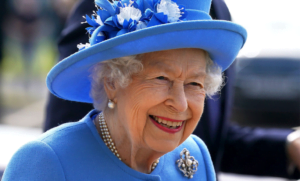When countries began declaring their independence from their colonizer, they came under an umbrella organization called the Commonwealth of Nations. The Commonwealth of Nations is perhaps the only institution where the British Monarchy had its influence outside the boundary of the UK.

Queen Elizabeth II
Here are five things to know about the Commonwealth of Nations:
-
What is the Commonwealth of Nations?
The Commonwealth of Nations, abbreviated as the Commonwealth, is a political organization comprised of 56 member states, the vast majority of which are former British Empire possessions.
The Commonwealth Secretariat, which focuses on intergovernmental issues, and the Commonwealth Foundation, which focuses on non-governmental connections among member states, are the organization’s primary organs.

Image Source: The Flag Institute
The Commonwealth traces back to the first half of the twentieth century when the British Empire was decolonized through enhanced self-governance of its possessions. The British Commonwealth of Nations was founded with the Balfour Declaration at the Imperial Conference in 1926, and the United Kingdom formalized it with the Statute of Westminster in 1931.
The current Commonwealth of Nations was formally founded in 1949 by the London Declaration, which modernized the community and established member countries as “free and equal.”
-
Who Heads The Commonwealth?
The ruler of the UK heads the Commonwealth. Queen Elizabeth II was the head of the Commonwealth under the London Declaration formula, a title that is legally part of Elizabeth’s royal titles in each of the Commonwealth nations, the 15 members of the Commonwealth that recognize her as their Queen. When the monarch dies, the heir to the throne does not instantly become the Commonwealth’s new leader.

King Charles III
However, Commonwealth leaders agreed in April 2018 that Prince Charles should replace his mother as the head. After the Queen’s death on September 8, 2022, King Charles III took over as Commonwealth Head.
-
The Members Of The Commonwealth:
The Commonwealth is made up of 56 countries from all inhabited continents. The members have a combined population of 2.4 billion people, or over one-third of the world’s population, with 1.4 billion in India and 94% in Asia or Africa.

Flags Of the Commonwealth Nations, London
Image Source: Wikipedia
Pakistan (227 million), Nigeria (213 million), Bangladesh (167 million), and the United Kingdom (68 million) are the next-largest Commonwealth countries by population after India. Tuvalu is the smallest member, with a population of approximately 12,000 people.
-
The Land Area And Economy Of The Commonwealth:
The Commonwealth nations’ land area is approximately 31,500,000 sq km (12,200,000 sq mi), or approximately 21% of the total world land area. Canada has a land area of 9,984,670 sq km (3,855,100 sq mi), while Australia has a land area of 7,617,930 sq km (2,941,300 sq mi).

Image Source: Wikipedia
In 2019, Commonwealth members had a collective GDP of more than $9 trillion, with the four largest economies accounting for 78% of that total: the United Kingdom ($3.124 trillion), India ($3.050 trillion), Canada ($1.652 trillion), and Australia ($1.379 trillion).
-
The Commonwealth Games:
The Commonwealth Games, a multi-sport event, are held every four years; the 2018 Commonwealth Games were held in Australia’s Gold Coast, and the 2022 Commonwealth Games were held in Birmingham; the 2026 Commonwealth Games will be held in Victoria, Australia.
In addition to the typical athletic disciplines at the Summer Olympic Events, the games include Commonwealth-specific sports such as bowls, netball, and rugby sevens.

Image Source: The Guardian
Formerly called the Empire Games, the Commonwealth Games were based on the amateur version of the Olympics but were promoted to be the “Friendly Games. The main goals of these games are to encourage relations between the member nations and to celebrate their sporting and cultural heritage.
Featured Image Source: Commonwealth Secretariat




















































































marizon ilogert
September 27, 2022 at 7:20 am
Thank you for helping out, superb info. “I have witnessed the softening of the hardest of hearts by a simple smile.” by Goldie Hawn.